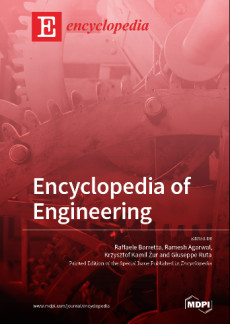In ancient times, Engineering Science was considered to be an art and led civilization and innovation for the progress of humanity. Machines and structures have been designed and built up thanks to applications of technical methodologies conceived by engineers. Aerospace, chemical, civil, electrical, and mechanical disciplines are the main branches of Engineering which thereby signify it has, nowadays, reached the status of being a multidisciplinary science.
This book is intended to provide a first collection of entries falling within the following topics:
(1) History of Mechanics – Editor: Giuseppe Ruta
(2) Civil Engineering – Editor: Raffaele Barretta
(3) Mechanical and Aerospace Engineering – Editor: Ramesh Agarwal
(4) Nanoengineering – Editor: Krzysztof Kamil Zur
A second book of Encyclopedia will subsequently be announced to complement the topical collection of Engineering outlined above.
Suggested Contents:
- Mechanics of mechanisms vs. mechanics of structures - two schools with prominent figures (S. P. Timoshenko above all)
- Rational thermodynamics: still a challenge?
- Rationalism vs. deductivism in mechanics: the various European school
- The influence of automatic calculus in mechanics: are ideas neglected in favour of fascinating graphs and sequences of digits?
- New problems in philosophy of science
- Mechanics vs. Natural philosophy: where do we stand?
- Mechanics and mathematics: the links and the differences between two worlds through the ages.
- Other topics are warmly welcomed as long as they are belong to the area of this book.
Please click here to find Guidelines for Submissions.
Volume
Institution: Department of Structures for Engineering and Architecture, University of Naples Federico II, Via Claudio, 21-80125 Naples, Italy
Interests: mechanics of nanostructures and nanocomposites; advanced materials; nonlocal constitutive models; functionally graded materials; generalized continua; beams, plates and shells; MEMS and NEMS
Institution: William Palm Professor of Engineering, Washington University in St. Louis, 1 Brookings Drive, St. Louis, MO 63130, USA
Interests: mechanical and aerospace engineering; energy and environment; computational fluid dynamics and computational physics (computational acoustics; computational electromagnetics; computational materials science and manufacturing; computational geo-sciences and computational combustion); fluid dynamics and heat transfer; hypersonic flow and rarefied gas dynamics; aerodynamics; ground effect aerodynamics; green aviation; turbo-machinery and pumps; microfluidics; bio-fluid mechanics; flow and flight control; chemical looping combustion; carbon capture; utilization and sequestration; wind, solar and bio-energy; climate modeling etc.
Institution: Department of Mechanical Engineering, Bialystok University of Technology, Wiejska 45C, 15-351 Bialystok, Poland
Interests: applied mathematics; linear and non-linear mechanics of composite structures at macro, micro, and nano scale; non-local continuum mechanics; smart materials and structures; composite materials
Institution: Department of Structural and Geotechnical Engineering, University “La Sapienza”, & National Group for Mathematical Physics, Rome, Italy
Interests: continuum mechanics; structural stability; beam theory; damage modeling and identification; history of mechanics
Featured Books
- Encyclopedia of Social Sciences
- Chief Editor: Kum Fai Yuen





